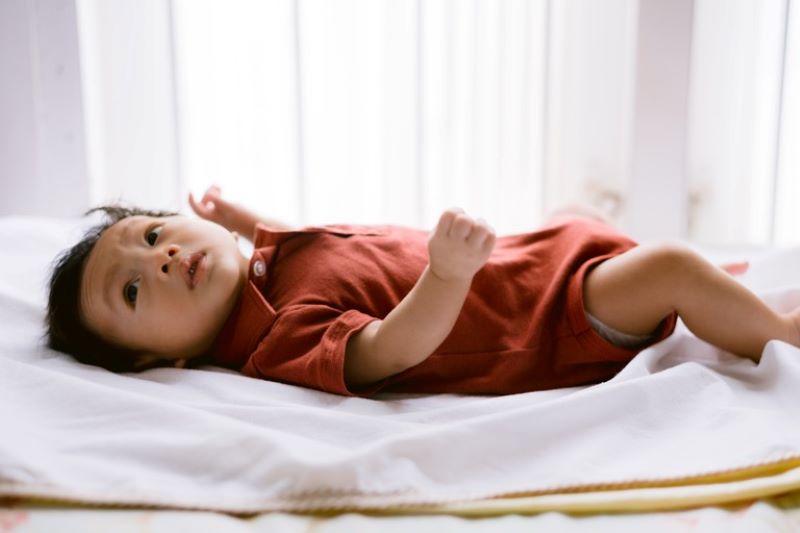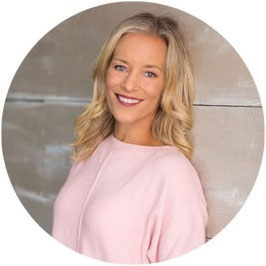In the world of babies, it can feel like you’re drowning in alphabet soup – BF, CIO, BLW, LC, FTM, PPA/D, SAHM, and VBAC – to name a few*. But we’re here today to add another important acronym to your parenting dictionary: TOG. TOG may be a new acronym to you, but it’s great to know because it can help everyone in your house get some good sleep. Since it is a lesser-known acronym, we’ve compiled some answers to the Frequently Asked Questions about TOG and what it does.
What does TOG stand for?
TOG stands for Thermal Overall Grade.
What does TOG measure?
TOG is a unit of measurement that tells you how warm an article of clothing is for your baby. The people who assign the TOG number have to figure out how well a material insulates heat before they can label it with a TOG.
Is TOG necessary?
TOG is a fantastic tool in every parent’s arsenal because it helps everyone stay safe and sleep better. Each family lives in a different circumstance: some live in warm climates, some cold, some wet, some dry! Some families have air conditioning, some have swamp coolers, and some just sleep with a fan on and window cracked in the summertime. On the other hand, during the winter, some families live where it’s warm enough that bedtime clothing choices don’t change much. Other families may need to bundle up in flannel PJs and throw on a few more quilts.
The problem is that babies can’t just sleep under a pile of blankets. Studies have shown that loose bedding and pajamas that are too warm can be contributing factors to Sudden Infant Death Syndrome (SIDS). It’s vital that your baby’s bed stays empty except for a firm mattress and tight-fitting sheet until they are at least one year old.
You’re not alone if you’ve ever felt puzzled over your baby’s sleeping temperature. How are you supposed to know if they’re too cold or hot if they can’t tell you? Additionally, there are a ton of different sleep sacks, swaddles, and pajama options out there, so how are you supposed to know what your baby should wear?
That’s where TOG steps in to help. It gives parents a good idea of what babies should be wearing based on their sleeping environment. The long and short of it is that TOG takes out a little bit of the guesswork.
What do the numbers mean?
Clothing manufacturers assign a TOG rating to different types of textiles dependent on the temperature of the environment.
| TOG Rating | Nursery Temperature Range | Possible Clothing Combos | Possible Fabrics |
| 0.2 | More than 80 degrees | Diaper only OR 0.2 sleepsack OR short-sleeved onesie | 100% cotton, 100% muslin |
| 0.5 | 75-80 degrees | Diaper only OR 0.5 sleep sack, OR short-sleeved onesie | 100% cotton, 100% muslin |
| 1.0 | 69-74 degrees | 1.0 sleep sack OR long-sleeved and long-bottomed pajamas OR footie pajamas OR 0.5 onesie and 0.5 sleep sack | 100% cotton, lightweight polyester |
| 2.5 | 60-68 degrees | 2.5 sleep sack and short-sleeved pajamas, 1.0 sleep sack and footie pajamas | 100% cotton, polyester, flannel, microfleece |
| 3.0 | Below 60 degrees | 3.0 sleep sack and footie pajamas, 3.0 sleep sack and long-sleeved and long-bottomed pajamas | 100% cotton, polyester, flannel, fleece, microfleece |
TOG Rating Nursery Temperature Range Possible Clothing Combos Possible Fabrics0.2 More than 80 degrees Diaper only OR 0.2 sleepsack OR short-sleeved onesie 100% cotton, 100% muslin0.5 75-80 degrees Diaper only OR 0.5 sleep sack, OR short-sleeved onesie 100% cotton, 100% muslin1.0 69-74 degrees 1.0 sleep sack OR long-sleeved and long-bottomed pajamas OR footie pajamas OR 0.5 onesie and 0.5 sleep sack 100% cotton, lightweight polyester2.5 60-68 degrees 2.5 sleep sack and short-sleeved pajamas, 1.0 sleep sack and footie pajamas 100% cotton, polyester, flannel, microfleece3.0 Below 60 degrees 3.0 sleep sack and footie pajamas, 3.0 sleep sack and long-sleeved and long-bottomed pajamas 100% cotton, polyester, flannel, fleece, microfleece
Do the numbers stack?
Yes, the TOG ratings stack, so if your child is wearing a 0.5 onesie and a 0.5 sleepsack, the total TOG rating they are wearing is 1.0. That means the nursery environment should be somewhere between 72 and 75 degrees Fahrenheit.
Where do I find the TOG on my child’s garments?
TOG values are becoming more common, but you won’t find them on all garments or sleep sacks. If you can’t find the TOG on the clothing tag, you might try looking on the manufacturer’s website. HALO, SleepingBaby, Bella Luna, and Aden+Anais have TOG levels listed under the product description for most of their sleep sacks, but Carter’s doesn’t have that information for their sleep products yet.
Does fabric that feels thick automatically have a high TOG?
Not necessarily. Some clothing might feel heavy in your hands, but the material doesn’t insulate well, so it has a smaller TOG value. Similarly, some fabric (ex: microfleece) could feel lightweight, but it insulates so well that it has a higher TOG value.
Are these hard-and-fast rules?
Unfortunately, no. Just like grown-up people, tiny people have unique bodies that respond differently to hot and cold. Your baby might run hot and require lighter clothing than your neighbor’s baby that needs to be bundled up every night. TOG gives you a good starting point to determine your child’s sleep and temperature needs. Until you understand your baby’s heat preferences, you should still check that the skin on the back of their neck is cool and dry. Sweating, redness, clamminess, or mottled skin could indicate that your child is too hot or cold.
There’s a lot of guesswork in parenting, but TOG can take away some of the uncertainty. When your infant won’t sleep through the night, try comparing the TOG ratings of their sleep sack against the temperature in your child’s nursery. It’s possible an extra onesie is all that’s standing between you and a fantastic night’s sleep. If that doesn’t do the trick, don’t hesitate to contact one of our pediatric sleep consultants today!
*Acronym Dictionary
BF: breastfeeding
CIO method: Cry It Out method
BLW: Baby-Led Weaning
LC: Lactation Consultant
FTM: First Time Mom
PPA/D: Postpartum Anxiety/Depression
SAHM: Stay At Home Mom
VBAC: Vaginal Birth After Cesarean


